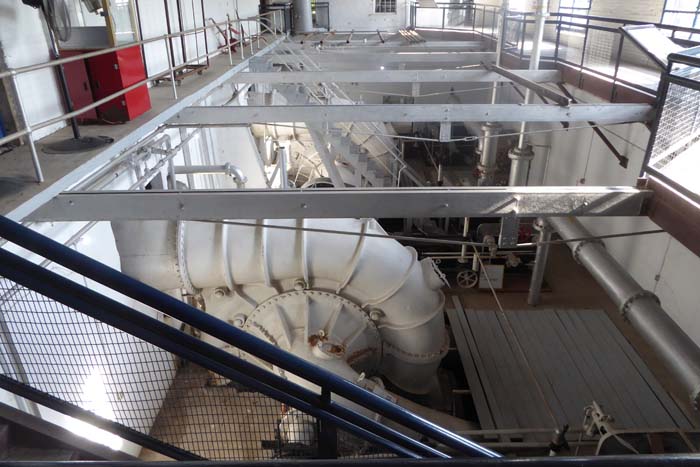Exploring the Rio Grande Valley
Published 12:00 pm Wednesday, March 14, 2018

- A portion of the interior of the Old Hidalgo Pump house Museum.
Following an afternoon tour of the King Ranch and a second night in Kingsville, Texas, we headed south to the Rio Grande Valley.
Our plan was to explore Texas’ southern border along the eastern portion of the Rio Grande River, a unique area of the state we hadn’t visited for more than a decade.
Trending
The Valley, as locals call it, consists of four Texas counties bordering the Rio Grande River along its last 100 miles from Rio Grande City to the river’s mouth near Brownsville.
Although called a valley, this area of South Texas is actually a delta or flood plain. The term “valley” was apparently used by early land speculators as a marketing ploy to lure buyers into purchasing parcels of arid land in what they called “the Magic Valley.”
Land in the Rio Grande Valley was never particularly valuable until the development of mechanized irrigation methods and the arrival of the railroad. The availability of irrigation in the fertile delta drew farmers from the Midwest and population exploded from 170,000 in 1930 to 1.3 million in 2012.
Our first stop was the Iwo Jima Monument and Museum in the town of Harlingen. The impressive monument is the full-size model used for making the iconic United States Marine Corps War Memorial in Washington, D.C.
Nearby is the grave of Corp. Harlon Block, one of the Marines depicted in the monument, who died on Iwo Jima. The monument and nearby museum are on the grounds of privately operated Marine Military Academy.
From Harlingen, it is 20 miles west to the town of Weslaco where we visited Estero Llano Grande State Park and World Birding Center.
Trending
It is one of nine World Birding Centers in the Rio Grande Valley and volunteers Tom and Connie Unsicker, our guides through the park, described it as the birding jewel of the Rio Grande Valley.
This is high praise since the valley is one of the country’s top birding areas. Tom mentioned one of the park’s birders identified 85 species during a two-hour walk.
Next up was the Weslaco Museum, a gem that interprets the early history of settlers of Weslaco. Museum volunteer Joe Vidales said all the museum artifacts have been donated by local residents.
Of particular interest are photos and exhibits of clothing made of fruits and vegetables by local women. Newly designed articles of clothing are modeled at the annual birthday party honoring farm products grown in the region.
A short distance up the street, Lionel’s Western Wear and Boutique was an eye-opener for South Georgia residents. It is a one-stop-shop for a complete Western outfit from the hat to the boots and everything in between.
Following a night in Weslaco, we headed 20 miles northwest to Edinberg where we paid a morning visit to the Museum of South Texas History.
What an impressive place this is!
The museum theme, “where two cultures meet,” is filled with exhibits, many of which are interactive, that interpret the development of southern Texas and northeastern Mexico. The museum consumes most of a city block.
After a lunch of enchiladas and burritos (what else?), we visited the Old Hidalgo Pumphouse and World Birding Center in the town of Hidalgo.
We enjoyed a guided tour with Jeremy Avendano who explained the operation of one of the most important facilities in the development of the Rio Grande Valley.
Pumphouses such as this provided the primary source of irrigation for more than 70 years.
A brochure for a self-guided tour is available if visitors miss the guided tour. A garden area between the pumphouse and the river includes a hike and bike trail.
Following our exploration of the Rio Grande Valley, we headed to Laredo and then, Del Rio. In truth, we didn’t allot nearly enough time for the valley.
We gained a flavor for this unique region of the country, but we missed a variety of small museums and other attractions we would have enjoyed. We should have allocated at least two additional days in the valley.
On the negative side, the valley’s vehicle traffic during the winter months is quite hectic. Even though the highways and streets are generally wide, the amount of traffic made driving a chore, at least for two retirees.
David and Kay Scott are authors of “Complete Guide to the National Park Lodges” (Globe Pequot). Visit them at mypages.valdosta.edu/dlscott/Scott.html. The Scotts live in Valdosta, Ga.


